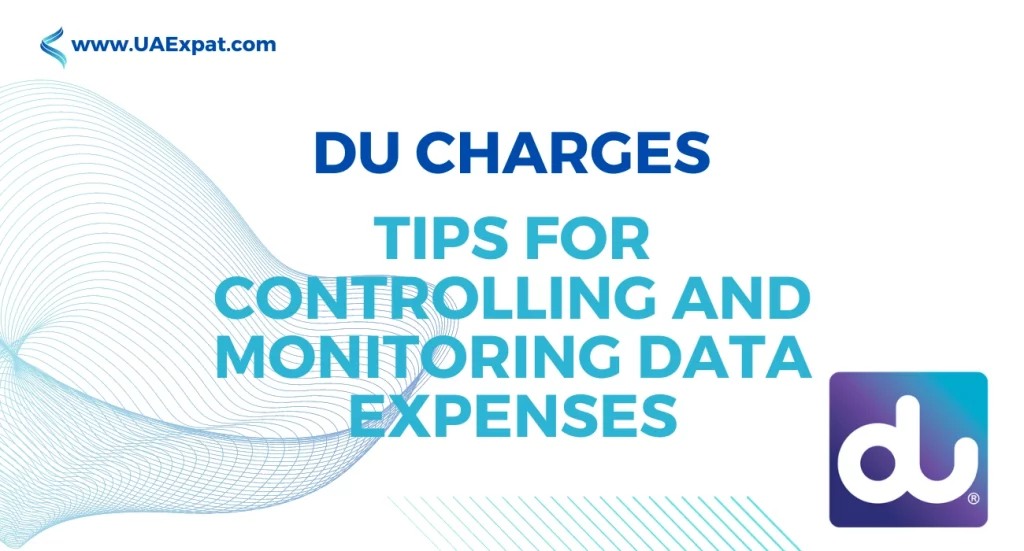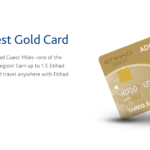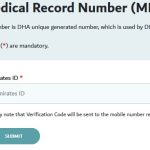Data usage has become an integral part of our lives. Whether it’s for streaming videos, browsing the web, or staying connected with loved ones, we rely heavily on data. However, with increased data consumption comes the concern of rising costs associated with it.
This article aims to provide valuable insights and practical tips for effectively controlling and monitoring DU charges, allowing you to manage your data expenses wisely.
What is DU Charges?
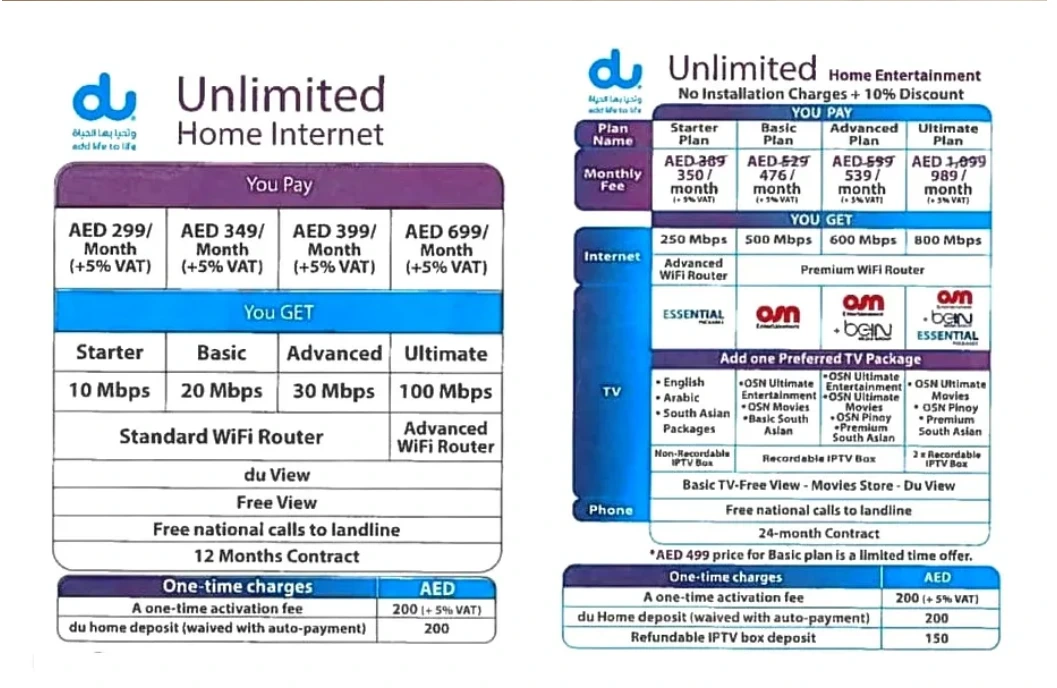
“DU Charges” refers to the charges or fees imposed by the telecom operator “du” for the data usage of its customers in the United Arab Emirates (UAE). Du is one of the major telecommunications companies in the UAE, providing mobile, internet, and other telecommunication services to both individuals and businesses.
When customers use their mobile devices to access the internet, send messages, stream videos, download files, or engage in any online activities that require data, du tracks the amount of data consumed by each customer.
This data usage is measured in megabytes (MB) or gigabytes (GB) and is subject to the pricing structure defined in the customer’s chosen data plan.
Customers typically subscribe to data plans that offer specific data allowances per billing cycle, which can be monthly or based on a different billing period. For instance, a customer might subscribe to a data plan that provides 5GB of data per month.
If the customer uses data beyond this allocated amount, additional charges, often referred to as “overage charges,” will apply.
The exact details of DU charges, including the cost per MB or GB of data used, the data plans available, and any additional services or promotions, can be found on du’s official website or communicated directly to customers through their billing statements and service agreements.
To manage their DU charges effectively, customers can monitor their data usage regularly, set data usage alerts to avoid surpassing their data limits, and consider data-saving practices like connecting to Wi-Fi whenever possible and using data compression tools.
Importance of Controlling Data Expenses
By controlling data expenses, you can make the most of your data plan, ensuring you have sufficient data throughout the billing cycle.
Controlling data expenses is of paramount importance for several compelling reasons:
- Cost Management: Data usage charges can quickly add up, especially for heavy data users. By controlling data expenses, individuals and businesses can stay within their budgetary limits and avoid unexpected high bills, preventing financial strain.
- Avoiding Overages: Exceeding data limits can result in overage charges, where service providers charge extra for data usage beyond the allocated amount. By monitoring and controlling data usage, users can prevent overages and the associated additional costs.
- Optimizing Data Plans: Understanding data usage patterns helps in selecting the most suitable data plan. By analyzing past consumption, users can choose data plans that align with their actual needs, avoiding the cost of unnecessary data allowances.
- Preserving Data Resources: In some cases, data plans may have limited data allowances or be subject to data throttling after reaching a certain limit. By controlling data expenses, users can make better use of their data resources and ensure that they have data available when they need it most.
- Efficient Internet Experience: High data expenses may lead users to restrict their internet usage, affecting productivity and leisure activities. By managing data expenses, users can enjoy a seamless online experience without worrying about exceeding limits or paying extra charges.
- Better Internet Connectivity: In some regions or during peak times, data speeds may be reduced for heavy data users. By controlling data usage, users can maintain optimal internet connectivity without facing slowdowns due to data throttling.
- Data Security: Some users may rely on public Wi-Fi networks to save on data costs. However, public Wi-Fi can pose security risks, making controlling data expenses essential for maintaining a secure online experience.
- Environmentally Friendly: Unnecessary data usage contributes to higher energy consumption and carbon emissions associated with data centers and network infrastructure. Controlling data expenses promotes a more environmentally friendly approach to data consumption.
- Resource Allocation: For businesses and organizations, controlling data expenses allows for better resource allocation. By understanding data needs and usage patterns, they can allocate resources effectively, optimizing their operational costs.
- Educational and Professional Growth: Data plays a crucial role in accessing educational resources, online courses, and professional development materials. By managing data expenses, individuals can continue to access valuable learning opportunities without limitations.
Tips for Controlling DU Charges
Controlling DU charges is essential to avoid overpaying for data and to make the most out of your data plan. Here are specific tips for effectively managing your data expenses:
A. Choosing the Right Data Plan
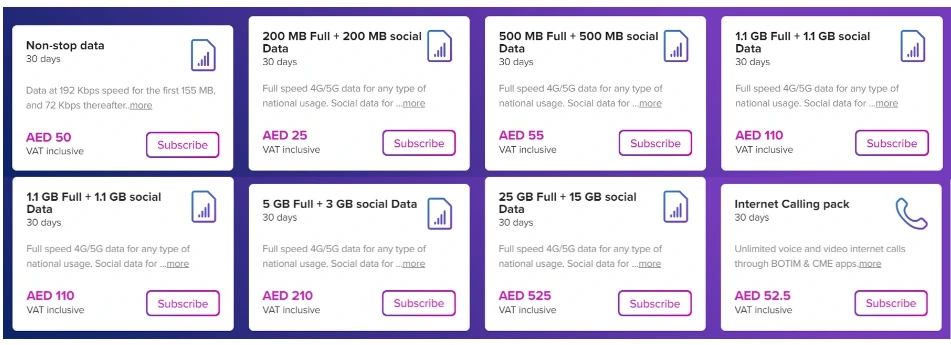
- Analyze Your Data Needs: Evaluate your typical data usage patterns over the past few months. Consider factors such as web browsing, streaming, gaming, and app usage to determine the appropriate data allowance you need.
- Compare Data Plans: Research and compare different data plans offered by your service provider. Look for plans that align with your data needs and offer the best value for money. Pay attention to any promotional offers or discounts that may be available.
- Flexibility: Opt for a data plan that allows for flexibility, such as the option to upgrade or downgrade your plan based on your changing data requirements.
B. Monitoring Data Usage
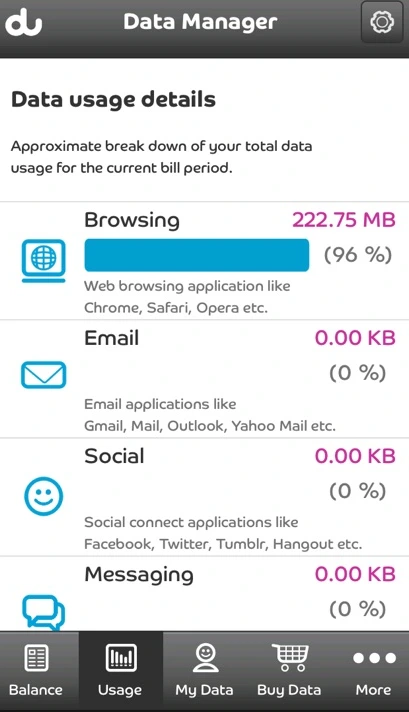
- Utilizing Data Tracking Apps: Many smartphones come with built-in data tracking features, or you can download data tracking apps from the app store. These apps provide real-time insights into your data usage, helping you stay aware of how much data you’ve used.
- Setting Data Usage Alerts: Enable data usage alerts on your smartphone to receive notifications when you approach a specified data limit. This way, you can proactively manage your data usage and avoid exceeding your data plan’s allowance.
C. Wi-Fi Usage Optimization
- Identifying Secure Wi-Fi Networks: When using public Wi-Fi, make sure to connect to secure and reputable networks. Avoid connecting to unsecured Wi-Fi networks, as they can pose security risks.
- Automating Wi-Fi Connectivity: Set your smartphone to automatically connect to trusted Wi-Fi networks when available. This can help reduce your reliance on mobile data and save on data usage.
D. Limiting Background Data Usage
Several apps consume data in the background, even when you’re not actively using them. Review your app settings and restrict background data usage for non-essential apps.
Go through the settings of your apps and identify those that consume data in the background. Restrict background data usage for non-essential apps to conserve data. This measure can significantly reduce your data consumption.
E. Managing App Updates
Adjust your app update settings to only update apps when connected to Wi-Fi. This prevents large app updates from consuming your mobile data.
F. Avoiding Data-Intensive Activities
- Streaming and Downloading Media: Streaming videos and music or downloading large files can quickly use up your data. Consider downloading media over Wi-Fi to enjoy it later offline and save on data usage.
- Online Gaming and Video Calls: Online gaming and video calls can be data-intensive activities. Whenever possible, use Wi-Fi connections for these activities to avoid excessive data consumption.
By following these tips, you can take control of your DU charges, optimize your data usage, and ensure that you stay within your data plan’s limits while enjoying a seamless online experience. It’s all about being mindful of your data usage and making smart choices to maximize the value of your data plan.
Tips for Monitoring DU Charges
Monitoring DU charges (Data Usage Charges) is essential to keep track of your data usage and expenses accurately. Here are specific tips to effectively monitor your DU charges:
A. Reviewing Billing Cycles
- Know Your Billing Cycle: Understand the start and end dates of your billing cycle. Most data plans have a monthly billing cycle, but it’s essential to be aware of the specific dates to track your usage accurately.
- Set Reminders: Set reminders on your calendar or smartphone to notify you when a new billing cycle starts. This will help you reset your data usage tracking and stay organized with your data management.
- Analyze Usage by Cycle: At the end of each billing cycle, review your data usage for that period. This practice allows you to identify any patterns or trends in your data consumption.
B. Understanding Itemized Billing
- Review Your Bill in Detail: Carefully examine your monthly bill provided by DU. Look for the section that breaks down your data usage charges. Itemized billing will show how much data you used and the corresponding charges.
- Identify Any Discrepancies: Check for any discrepancies or unexpected charges in your itemized bill. If you notice anything unusual, contact DU’s customer service for clarification and resolution.
C. Checking Data Usage Reports
- Use DU’s Online Account Portal: Log in to your DU online account to access detailed data usage reports. These reports typically provide a breakdown of your data usage, showing how much data you used on specific days.
- Set Data Usage Alerts: DU’s online portal may allow you to set data usage alerts. Configure these alerts to notify you when you reach a certain data threshold, so you can proactively manage your usage.
- Track Usage Periodically: Regularly check your data usage reports to stay informed about your data consumption trends. This will help you stay on top of your data expenses and make any necessary adjustments to your usage habits.
D. Identifying Data Peaks and Trends
- Analyze Usage Patterns: Review your data usage reports over several billing cycles to identify any data peaks or trends. Look for months with unusually high data usage and try to identify the reasons behind them.
- Identify High-Data Days: Pay attention to specific days with significantly higher data usage. This could be related to activities like streaming, downloading large files, or app updates.
- Adjust Data Usage: Use the insights from your data peaks and trends to adjust your data usage habits. For example, if you notice high data usage on certain days, plan data-intensive activities for times when you have access to Wi-Fi.
Data Cost Optimization Techniques
A. Data Compression Tools
- Understand Data Compression: Data compression tools are designed to reduce the size of data packets sent and received by your device. They achieve this by compressing files and web pages, resulting in lower data consumption during internet browsing.
- Install Data Compression Apps: Look for reputable data compression apps available for your device’s operating system. These apps can be easily installed and configured to work in the background while you browse the internet.
- Browser Extensions: Some web browsers offer built-in data compression features or extensions that can compress web content, images, and videos to save data.
- Enable Data Compression on Apps: Certain apps may have data-saving features that you can enable in their settings. For example, social media apps often have data-saving modes that reduce the quality of images and videos to reduce data usage.
B. Using Offline Mode for Apps
- Download Content for Offline Use: Many apps, including music streaming services, video streaming platforms, and document editors, allow you to download content for offline use. Downloading content while connected to Wi-Fi can help you save on data when you access it later without an internet connection.
- Offline Maps and Navigation: Utilize offline maps and navigation apps when you are traveling or exploring new areas. Offline maps use less data compared to real-time navigation services.
C. Caching Web Content
- Understand Web Caching: Web caching involves temporarily storing web content on your device. When you revisit a website, the cached content is loaded, reducing the need to download the same data again, and thus, conserving data.
- Enable Browser Caching: Most web browsers have caching enabled by default. However, you can check your browser settings to ensure caching is enabled, allowing faster loading times and reduced data usage for frequently visited sites.
- Use Apps with Offline Mode: Some apps, like email clients and news readers, offer offline modes that cache content for later reading. Enable these features to access content without the need for constant data retrieval.
DU Charges Savings Strategies
To save on DU charges and reduce data expenses, consider implementing the following strategies:
A. Negotiating with the Service Provider
- Research Competing Offers: Before negotiating with DU, research the data plans and offers provided by other telecom operators in the UAE. Having knowledge of the competition will give you leverage during negotiations.
- Be a Long-Term Customer: If you have been a loyal customer of DU for an extended period, mention your loyalty during negotiations. Service providers often value long-term customers and may be willing to offer better deals to retain your business.
- Express Your Needs: Clearly communicate your data needs and budget constraints to the customer service representative. Let them know if you are considering switching to a different provider due to cost concerns.
- Explore Customized Plans: In some cases, service providers may be able to offer custom data plans tailored to your specific needs. Discuss your usage patterns and see if they can create a plan that suits you better.
B. Promotions and Special Offers
- Stay Informed: Keep an eye on DU’s website, social media channels, and promotional emails for any special offers or limited-time promotions related to data plans. These promotions often include data add-ons or reduced data rates.
- Seasonal Offers: During festive seasons or special occasions, service providers may introduce temporary promotions. Take advantage of these seasonal offers to save on data expenses.
C. Family and Shared Data Plans
- Combine Family Members’ Data: Consider opting for a family or shared data plan if you have multiple family members using DU services. Shared plans often offer better value and cost savings, as data allowances can be shared among family members.
- Control Data Usage: With shared data plans, it’s crucial to communicate and manage data usage within the family. Set data usage rules and monitor usage to avoid exceeding the shared data allowance.
D. Loyalty Rewards and Discounts
- Check for Loyalty Programs: Inquire with DU about any loyalty programs they offer. These programs may provide rewards, discounts, or special privileges to loyal customers based on their tenure with the company.
- Bundle Services: Some service providers offer discounts when you bundle multiple services, such as mobile, internet, and TV plans. Explore bundling options to potentially save on overall expenses.
- Student or Corporate Discounts: DU may have special discount programs for students or corporate employees. If you fall into either category, check if you qualify for any discounted data plans.
By employing these DU charges savings strategies, you can potentially lower your data expenses and get more value out of your data plan.
Remember to stay informed about promotions, negotiate with the service provider, and explore shared plans or loyalty rewards to maximize cost savings.
Conclusion
Controlling and monitoring DU charges is essential for managing your data expenses effectively. By choosing the right data plan, optimizing Wi-Fi usage, and being mindful of data-intensive activities, you can make the most of your data allowance and avoid unnecessary costs.
Utilizing data tracking apps, setting alerts, and reviewing billing cycles help you stay in control of your data usage. Additionally, exploring data cost optimization techniques and taking advantage of savings strategies can further contribute to better management of DU charges.
FAQ
- Can I change my data plan mid-cycle to avoid extra charges? Yes, you can change your data plan mid-cycle, but it’s essential to understand the implications. Some service providers may allow plan changes without any penalties, while others may prorate the charges based on the days you used each plan. It’s best to contact DU and inquire about their policy for plan changes to make an informed decision.
- Are there any data usage apps that you recommend? There are several excellent data usage apps available for both Android and iOS devices. Some popular choices include “My Data Manager,” “Data Usage Monitor,” and “Data Usage Defender.” These apps offer real-time monitoring, custom alerts, and detailed data usage reports.
- How can I track data usage for specific apps? Many data tracking apps provide granular insights into app-specific data usage. They can show you which apps consume the most data and even allow you to set data limits for individual apps. This way, you can identify data-hungry apps and manage them efficiently.
- Is it possible to negotiate data plan costs with DU? Yes, it’s worth trying to negotiate data plan costs with DU. Being a loyal customer or considering bundling services may give you leverage for potential discounts or cost-saving options. Reach out to their customer service and inquire about any available promotions or personalized offers.
- Can I use Wi-Fi calling to save on mobile data? Yes, Wi-Fi calling is an excellent way to save on mobile data, especially if you’re in an area with a stable Wi-Fi connection. Most smartphones support Wi-Fi calling, and it allows you to make calls without using your mobile data or cellular minutes.

